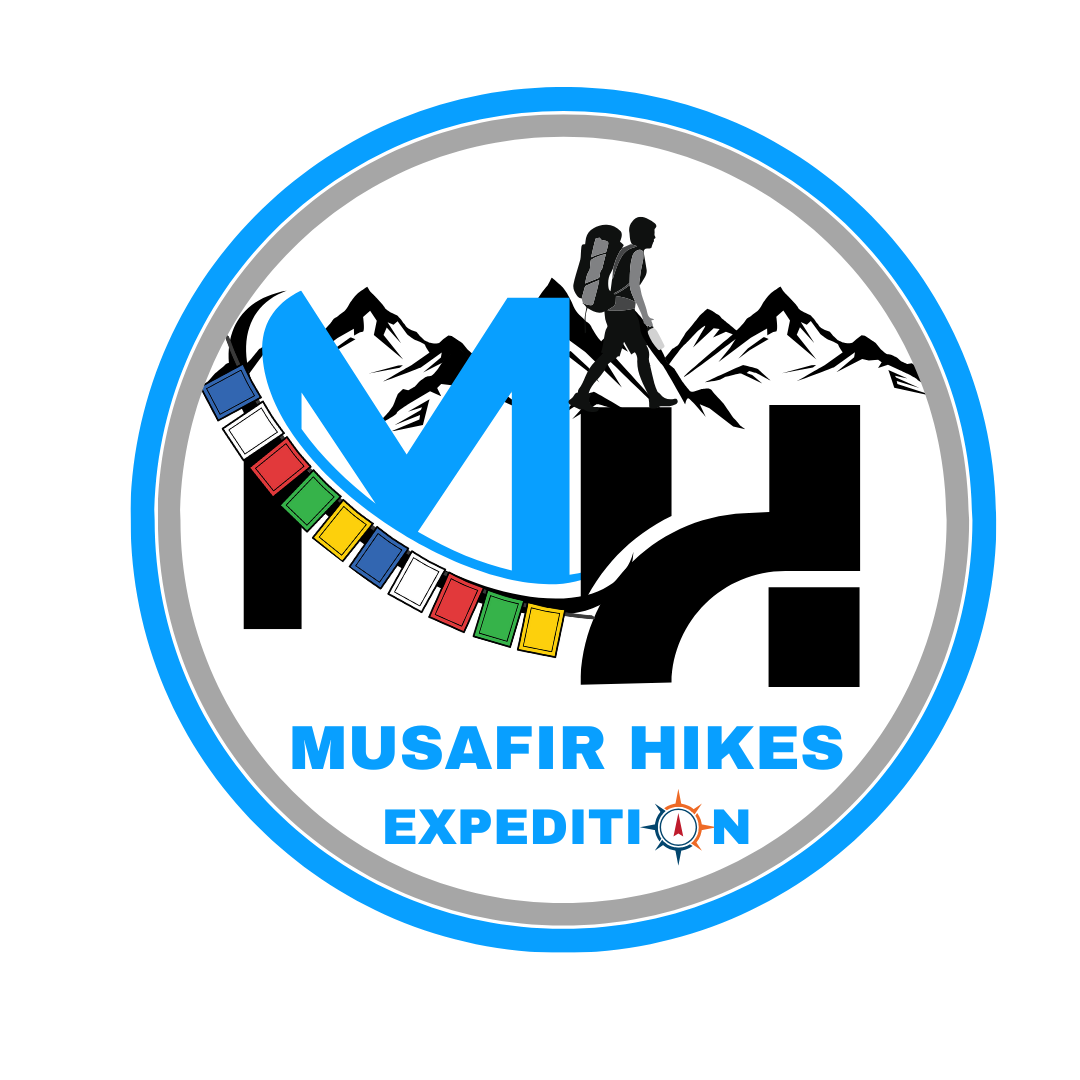Region
Himanchal Pradesh | India
Duration
5 Days
Max. Altitude
15,027 ft.
Drive Km.
950 km
Grade
Moderate
Get in Touch with Our Trek Expert
- 91-9634395113
- info@musafirhikes.com
- Monday - Saturday: 10 AM to 06 PM
Rs. 18,500 /Person
Fixed Departure Dates
Sept 2025
- 5% GST will be applicable on Trek Cost and Add-ons.
- Meeting Point( Pickup/ Drop Point ): Majnu Ka Tilla,Delhi.
- Reporting Time: 2:00 am
- Drop Time: 6:30 pm to 7:30 pm (Timings are subject to change based on weather and road conditions).
- Please reach Delhi a day before to avoid any delays.
Overview
Hidden away in the remote folds of the Indian Himalayas lies a land so stark, so silent, and so surreal that it feels more like a dream than a destination. Welcome to Spiti Valley — a high-altitude cold desert nestled between Tibet and Himachal Pradesh, untouched by the chaos of modern life and etched with centuries-old monasteries, fossil-rich villages and landscapes.
The Spiti Half Circuit, starting from Manali, is not just a route — it’s an experience of raw nature, timeless culture, and soul-stirring adventure. This circuit winds through the mighty Atal Tunnel, past cascading waterfalls and jagged peaks, over the legendary Kunzum Pass, and deep into the heart of Spiti, reaching up to Chandratal Lake, where the stars light up the sky like nowhere else on Earth. Covering approximately 900–950 kilometers in six unforgettable days, this journey offers an ever-changing canvas of terrain — from pine-clad valleys to barren moonscapes, glacial rivers, and golden-hued villages resting under endless skies.
As the altitude rises, so does the sense of wonder. Explore the gravity-defying Key Monastery, drive across Asia’s highest bridge at Chicham, sip butter tea with monks, and post letters from Hikkim, the world’s highest post office. Stand still in Komic, the highest motorable village on Earth, or lie under a billion stars at Chandratal, where silence is sacred and the air feels thinner but purer.
This circuit isn’t about luxury or ticking boxes — it’s about rediscovering simplicity, pushing limits, and immersing yourself in the rhythm of the mountains. Ideal for those who crave roads less taken, the Spiti Half Circuit with Musafir Hikes is a call to the wild, a window into ancient Himalayan life, and a reminder that sometimes, the best journeys are the ones that challenge you the most.
Who Can Participate
Age Requirements: 9 years & above.
First-timers are welcome. No trekking is involved, but participants must be comfortable with long road journeys and high altitude.
Fitness Criteria:
Should be able to sit through 6–8 hours of mountain driving per day without major discomfort.
Should be free from serious heart, lung, or altitude-related medical issues.
Must be able to handle high-altitude conditions (up to 4,000 m) where oxygen levels are lower.
Should be comfortable with basic accommodation in remote areas and variable weather.
If BMI is outside the normal range (18–29), please consult our Tour Coordinator before booking.
Note: This trip is not recommended for infants, very elderly travelers, or those with severe motion sickness or chronic altitude-related problems.
Spiti Valley- Half Circuit Itinerary
DAY 0
Delhi to Manali
Drive Distance: 530 km
Drive Time: 12–14 hrs
Altitude: 2,050 m.
DAY 1
Manali Local Sightseeing
Drive Distance: 200 km
Drive Time: 2–3 hrs (local travel)
DAY 2
Manali → Atal Tunnel → Kunzum Pass → Kaza.
- Drive Distance: 200 km
- Drive Time: 8–10 hrs
Altitude:
- Manali: 2,050 m.
- Kunzum Pass: 4,551 m.
- Kaza: 3,800 m.
DAY 3
Kaza → Key → Hikkim → Langza → Komic → Kaza
- Drive Distance: 50–60 km (loop).
- Drive Time: 4–5 hrs.
Altitude :
- Key Monastery: 4,166 m
- Hikkim: 4,400 m
- Langza: 4,400 m
- Komic: 4,587 m
DAY 4
Kaza → Chicham Bridge → Chandratal Lake.
- Drive Distance: 90–100 km
- Drive Time: 6–7 hrs
Altitude: Chandratal: 4,270 m
DAY 5
Chandratal → Manali → Delhi.
- Chandratal to Manali: 130 km (6–7 hrs).
- Manali to Delhi: 530 km (12–14 hrs, overnight)
Trip Ends: Arrival in Delhi by morning.
Delhi to Manali
Drive Distance: 530 km
Drive Time: 12–14 hrs.
Your journey begins with an overnight drive from Delhi to Manali, transitioning from the urban sprawl of the plains to the pine-laced foothills of Himachal. The route passes through vibrant towns like Chandigarh, Mandi, and Kullu, with the scenery becoming increasingly picturesque as you approach Manali. In summer, you’ll witness lush green valleys, apple orchards, and lively rivers. In early winter the landscape changes to golden foliage, misty mountains, and snow-capped ridges in the distance — a magical preview of what lies ahead.
Manali Local Sightseeing
Drive Distance: 200 km.
DriveTime:2–3 hrs (local travel)
This day is designed for rest and acclimatization while enjoying Manali’s charming sites. Visit the iconic Hidimba Devi Temple nestled among cedar trees, take a relaxing dip in the Vashisht hot springs, and explore the bustling cafes and shops on Mall Road. For the adventurous, Solang Valley offers ziplining, ropeways, and ATV rides. During summer, the area is alive with greenery, melting snow streams, and vibrant markets. In early winter, crisp air and clear skies make every view postcard-worthy, with occasional snowfall on surrounding peaks.
Manali → Atal Tunnel → Kunzum Pass → Kaza
Drive Distance: 50–60 km (loop)
Drive Time: 4–5 hrs (with stops).
This day is all about exploring the cultural treasures and high-altitude villages of Spiti. Start with the majestic Key Monastery, perched dramatically above the valley, home to monks and ancient scriptures. Next, head to Hikkim — the location of the world’s highest post office — where you can mail a postcard from the rooftop of the world. Langza welcomes you with a massive Buddha statue overlooking fossil-rich hills, while Komic, at 4,587 m, stands as the world’s highest motorable village. In summer, the villages are surrounded by green patches and blooming flowers. In early winter, the same villages turn silent and golden, dusted with the season’s first snow.
Kaza → Chicham Bridge → Kunzum Pass → Chandratal Lake
Drive Distance: 90–100 km.
Drive Time: 6–7 hrs.
Depart Kaza and drive to the thrilling Chicham Bridge — Asia’s highest suspension bridge, hanging over a 1,000-foot gorge. The journey continues back across Kunzum Pass toward the stunning Chandratal Lake. A short hike leads you to this moon-shaped alpine gem, reflecting surrounding peaks in its glass-like water. In summer, the lake is surrounded by wildflowers and grassy banks, ideal for sitting by the water’s edge. In early winter, the scenery turns stark and silent, with frozen patches near the lake and a clear sky perfect for stargazing. Tonight, enjoy high-altitude camping under a sky glittering with countless stars.
Hargaon Thach to Sankri and return to Dehradun
Drive Distance:
- Chandratal to Manali: 130 km (6–7 hrs)
- Manali to Delhi: 530 km (12–14 hrs, overnight)
The final leg of your journey begins with an early descent from Chandratal to Manali via Batal and the rugged Spiti–Lahaul route. The terrain is dramatic and raw, with waterfalls, rock walls, and sharp turns offering one last dose of adventure. Re-enter the greener side of Himachal after passing through the Atal Tunnel once again. After reaching Manali, you’ll have time to rest or freshen up before boarding your overnight vehicle to Delhi. As you leave the mountains behind, you carry with you not just photographs, but the silence, vastness, and stories of the Spitian land.
Note: Read more about our Customize Tours Plan before booking your tour.
The Spiti Half Circuit—from Manali through Kaza, Langza, and Chandratal—is accessible for a limited period each year, typically from mid-June to early October. During this narrow window, high mountain passes like Kunzum La (4,551 m) open up, and the region comes alive with striking contrasts, ancient culture, and dramatic terrain.
Mid-June to Early July: Snow Walls & Raw Adventure
As the snow begins to retreat and roads reopen after the long winter, Spiti emerges from isolation. The drive through Atal Tunnel, Batal, and over Kunzum Pass is flanked by massive snow walls and gushing glacial streams. The mountains are still white-capped, and the air carries the raw freshness of a world just awakening. Fewer tourists venture here this early, making it a perfect time for solitude and rugged exploration.
Highlights: Towering snow walls, roaring waterfalls, ice-fed rivers, minimal crowds
Best for: Adventure seekers, snow lovers, and photographers craving stark contrasts
Mid-July to Mid-August: High-Altitude Glory in Full Swing
This is Spiti at its liveliest. Roads are stable, and high-altitude villages like Komic, Hikkim, and Langza are fully accessible. The valleys are dry yet golden, the rivers flow strong, and Chandratal Lake reveals its turquoise beauty. During this time, you’ll also encounter vibrant local life—monks in monasteries, children in village schools, and families working in barley fields.
Highlights: Clear access to all spots, lively villages, fully thawed Chandratal, warm sunny days
Best for: Trekkers, cultural explorers, and first-time Spiti travelers
Mid-August to Early October: Crisp Air & Golden Landscapes
As the monsoon weakens, the skies turn a deeper shade of blue, and the Spiti landscape transitions into a warm, golden desert. Mornings and evenings are cold, but the days are ideal for photography, stargazing, and uninterrupted drives. Chandratal becomes crystal-clear, reflecting dramatic peaks, and the crowds begin to thin out, making it one of the most peaceful times to visit.
Highlights: Golden valleys, star-studded skies, quiet roads, excellent visibility
Best for: Photographers, peace-seekers, and couples looking for scenic tranquility
Bonus Insight: Best Time for Chandratal Camping
The most scenic and stable period for camping at Chandratal Lake (4,270 m) is from mid-July to mid-September. The lake is fully accessible, and skies are usually clear, offering one of the best astrophotography opportunities in the Indian Himalayas. Nights are cold but magical, especially under a full moon or Milky Way arc.
Spiti Valley- Half Circuit Map
Tour Guidelines
Health & Awareness
- All participants must ensure they are fit for high-altitude travel (up to ~4,000 m) and long road journeys before joining the trip. A basic health check-up is strongly recommended.
- Participants with chronic medical conditions (e.g., asthma, heart disease, epilepsy, diabetes, high blood pressure) must declare them during registration and carry their prescribed medicines.
- A first aid kit, oxygen cylinder, and oximeter will be available in the vehicle for emergencies.
- The road captain/tour leader is trained in basic first aid and high-altitude awareness.
- Travelers must be aware of Altitude Mountain Sickness (AMS), its symptoms, and precautions. Guidelines will be shared during the briefing session before the journey begins.
Government Employees
- As per Indian Government rules, employees availing leave for adventure tours must ensure proper leave sanction orders from their department before joining the trip.
- Employees seeking reimbursement or recognition for such travel should confirm eligibility with their respective organization in advance.
- A participation certificate will be provided at the end of the trip, which can be submitted to concerned government departments or organizations for official use.
- It is the participant’s responsibility to comply with their organization’s travel, safety, and insurance policies before joining.
Kids Guidelines
- Children below 9 years are generally not recommended for high-altitude road trips due to long travel hours and altitude exposure.
- For family road trips, children aged 9–15 years must be accompanied by a parent/guardian and may be asked for a fitness clearance certificate from a registered doctor.
- Kids should be mentally prepared for long drives (6–8 hrs/day), winding mountain roads, and basic facilities in remote areas.
- Parents/guardians are solely responsible for their child’s safety, comfort, and adherence to tour guidelines throughout the journey.
Fitness Required
- All participants must be fit for high-altitude travel as per general tourism and safety guidelines.
- Minimum fitness requirements:
- Ability to comfortably sit through 6–8 hours of mountain driving per day.
- No history of serious altitude-related illnesses.
- No recent major surgeries or serious medical conditions in the past 6 months.
- A basic medical fitness certificate (from an MBBS/MD doctor) is recommended, especially for participants above 45 years or those with prior medical conditions.
- Alcohol, smoking, and drug use are strictly prohibited during the trip for safety reasons.
What To Pack
Shoes & Bags
Comfortable sports shoes or walking shoes (avoid brand-new ones to prevent shoe bites).
A daypack (20–30L) with rain cover for carrying water, snacks, camera, and essentials during sightseeing.
A duffel bag/trolley bag (40–60L) for main luggage (kept in the vehicle).
Clothing & Warm Layers
Warm layers (weather-dependent):
- Spring/Summer/Monsoon (Apr–Sep): 2–3 layers (light woollen sweater, fleece, padded jacket).
- Autumn/Winter (Oct–Mar): 4–5 layers (thermals, woollen sweater, 2 fleece, padded jacket).
3–4 collared T-shirts/shirts (prefer quick-dry).
2–3 pairs of comfortable pants/jeans/trek pants.
Cap/hat for sun protection + woollen cap & gloves for cold.
Socks: 3–4 pairs (cotton + woollen).
Travel & Road Essentials
Sunglasses with UV protection.
Sunscreen (SPF 40+), lip balm, moisturizer.
Reusable water bottle/thermos (1L).
Personal medicines & basic first aid kit.
Power bank & extra batteries for camera/phone.
ID proof (Aadhar/Passport/Driving License).
Cash (ATMs maybe limited and unreliable).
Optional (but useful):
Neck pillow/eye mask for long drives.
Scarf/buff to protect from dust & cold winds.
Small snacks (energy bars, dry fruits, chocolates).
Continue Reading..
Toiletries:
- Moisturiser
- Light towel
- Lip balm or vaseline
- Toilet paper
- Toothbrush
- Toothpaste
- Reusable plastic covers (for used clothes)
Cutlery:
- Steel lunch box, spoon and a Two water bottles or Hydration Pack
Basic Medical Kit (Carried by You)
While Musafir Hikes carries a larger medical kit, we recommend bringing personal medicines:
- Diamox (for AMS) – only after doctor consultation
- Paracetamol, Combiflam
- Avomine (for motion sickness)
- ORS or Electrolyte Sachets
- Band-aids, Antiseptic Cream
- Muscle Spray or Pain Relief Balm
- Any prescribed medication
Documents & Personal Items
- Government ID (Aadhar/Passport) – Mandatory for forest permits
- Photocopies of ID – At least 2
- Passport-size Photos – 2–4 (for permits)
- Cash – ATMs may not work beyond Joshimath; keep ₹2,000–₹3,000 for local expenses
- Small Notepad + Pen – For journaling or information
Pro Tips
- Pack light but don’t skip essentials. Every extra kilo will feel heavier at 3,500 m.
- Avoid plastic bags. Use dry bags or zip-locks to keep items dry and organized.
Check weather forecasts a day before your trip and adjust accordingly.
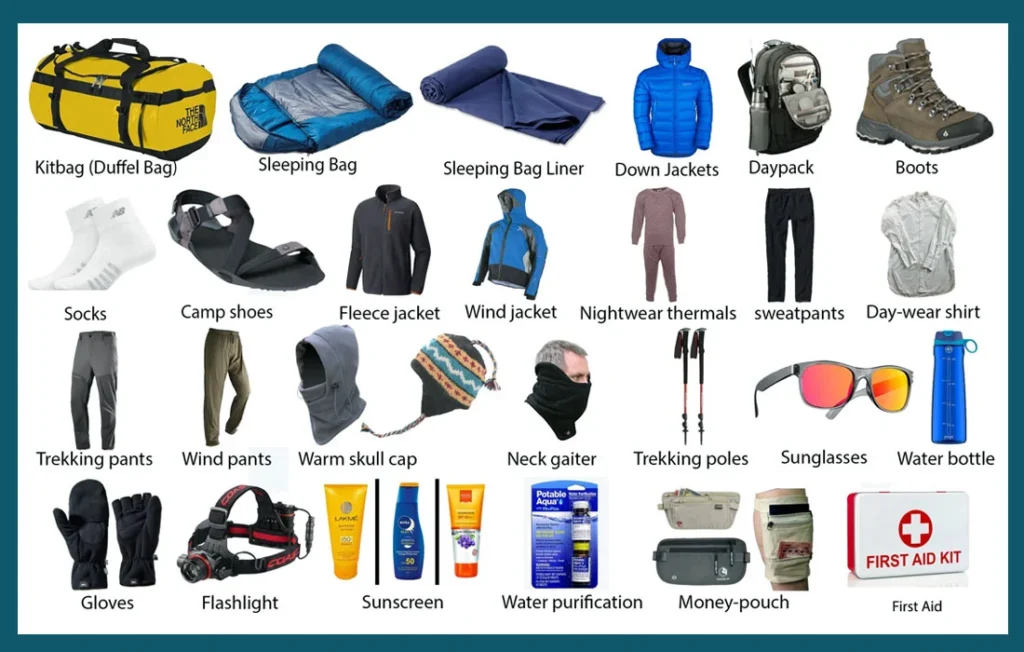
How To Reach
Pick-Up Information
All participants must arrive in Delhi by 05:00 pm on the tour start date.
Pick-up Location: Majnu Ka Tilla, Delhi.
Once you reach Delhi, Musafir Hikes Expeditions (MHE) will take care of your travel arrangements if you’ve opted for the pick-up service.
You can add this service as an add-on option during booking.
Alternative Arrival Options:
If Delhi is not convenient, you may also arrive at Chandigarh or Shimla, and join the group from there. Please contact us in advance to coordinate.
Drop-Off Information
The drop-off point will be the same as the pick-up point (Majnu Ka Tilla, Delhi).
Expected arrival back in Delhi is around 07:00 pm.
Plan your onward travel after 10:00 pm to avoid rush or delays.
Important Notes
During July and August (Monsoon season), always keep one buffer day in your itinerary, as road conditions may cause delays.
If the buffer day is not used, you may explore Delhi, Chandigarh, or Shimla depending on your exit route.
MHE provides comfortable vehicles such as Tempo Traveler, Bolero, or equivalent for the journey.
Vehicle upgrades are available on request. Please check with your Tour Coordinator for assistance.
Cost Terms
✅Inclusion
Accommodation (as per the itinerary):
- Triple/quad sharing (separate for males and females throughout the trek)
Meals (Veg + Egg):
- All meals (including tea, soup, snacks, etc.) from Day 1 Dinner to Day 3 Breakfast. Morning and evening tea, accompanied by light snacks, are included in the Tungnath-Chandrashilla trekking package.
3. Support:
- 1 Versatile base camp manager handles communication and deploys extra manpower in emergencies.
- 1 Mountaineering & First aid qualified professional trek Leader.
- 1 Experienced high-altitude chef.
- Local experienced guides (Number of guides depending on the group size).
- Enough support staff.
Trek equipment:
- Sleeping bag, Sleeping liners (if required), mattresses, and Utensils.
- 3 men all season trekker tent (twin sharing), Kitchen & Dining tent, Toilet tent.
- Camping stool, Walkie talkie.
- Ropes, Helmet, Ice axe, Harness, Gaiters & crampons (if required).
5. First aid:
- Medical kit,Stretcher,Oxygen cylinder,Blood pressure monitor,Oximeter,Stethoscope.
6. Transportation (as per the itinerary). Mules/porters to carry the central luggage.
- Cloakroom facility available at the base camp for additional luggage
- All necessary permits and entry fees, Upto the amount charged for Indian
- Trek Completion Certificate.
❌Exclusion
- Insurance (Mandatory).
- Food during the transit.
- Any kind of personal expenses.
- Mule or porter to carry personal luggage.
- Emergency evacuation, hospitalization charge, etc.
- Anything not specifically mentioned under the head Inclusion.
Things can be provided on demand and availability (participant has to pay extra for these things).
- Satellite phone/set phone – is a type of mobile phone that connects via radio links via satellites orbiting the Earth instead of terrestrial cell sites like cellphones. Therefore, they can operate in most geographic locations on the Earth’s surface.
- Gamow/PAC HAPO Bag(Portable Hyperbaric Bag) – is a unique, portable hyperbaric chamber for the treatment of acute mountain sickness (AMS), also known as altitude sickness.
- AEDs (Automated External Defibrillators) are portable life-saving devices designed to treat people experiencing sudden cardiac arrest, a medical condition in which the heart stops beating suddenly and unexpectedly.
Cancellation & Rescheduling Policy
We understand that plans can change. Our policies are simple, transparent, and designed to balance your flexibility with the commitments we make to our local teams.
 Cancellation Policy
Cancellation Policy
- Cancellation requests must be made in writing via email (info@musafirhikes.com)
- The date of cancellation is the date we receive your request, not when it is sent.
Refunds
- 30+ days before trek → Full refund (minus 1.99% processing fee)
- 15–29 days before trek → 80% refund
- 10–14 days before trek → 60% refund
- 5–9 days before trek → 40% refund
- ≤4 days before trek → No refund
Rescheduling Policy
- Requests must also be made in writing (e.g., via email).
- The date of receipt determines rescheduling eligibility.
Rescheduling Fees
- 30+ days before trek → Free reschedule
- 15–29 days before trek → 10% fee
- 10–14 days before trek → 20% fee
- 5–9 days before trek → 30% fee
- ≤4 days before trek → Not possible
Notes
- Refunds are processed within 7–10 business days to the original payment method.
- Timelines are counted from the original trek start date.
- If a trek is affected by weather, natural events, or government restrictions, we will try to reschedule first. If not possible, the cancellation terms above apply.
- Bookings are non-transferable.
- Once rescheduled, treks become non-refundable.
Trek Essentials
Gallery
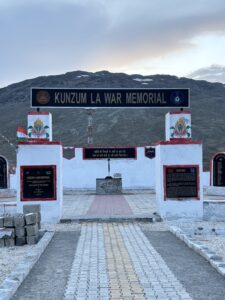
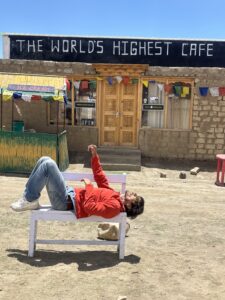
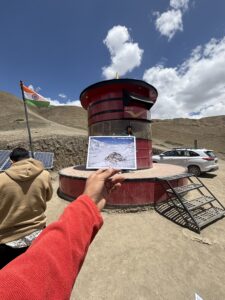
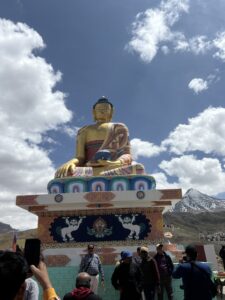
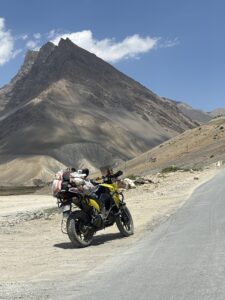
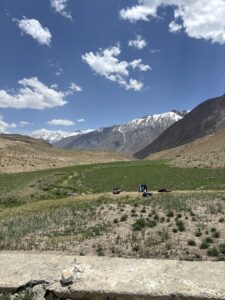
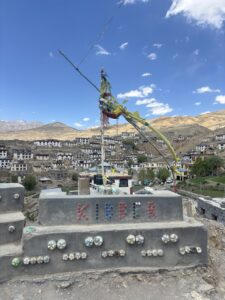
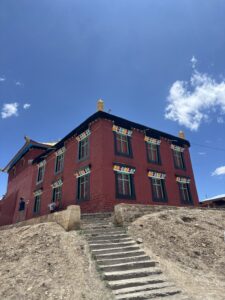
Tour Reviews




Frequently Asked Questions(FAQ)
What are the stay options like during the trip?
- Manali & Kaza: Hotels or guesthouses with attached washrooms
- Chandratal: Tented alpine camps with sleeping bags and warm bedding
All stays are clean, scenic, and handpicked for comfort and safety.
Is altitude sickness a concern in Spiti?
Yes, due to elevations above 4,000 m. We include acclimatization days, travel gradually, and advise hydration and light eating. Our staff carries basic first-aid and emergency oxygen if required.
Is there mobile network and internet access?
- Manali & Kaza: BSNL, Jio, and Airtel work intermittently
- Remote villages & Chandratal: No network
Inform your contacts in advance and enjoy a digital detox!
Can families or kids join the Spiti Half Circuit?
Yes, but children below 10 years and elderly individuals with health conditions should avoid high-altitude exposure unless medically cleared. Please consult us before booking for families.
What makes the Spiti Half Circuit different from a full Spiti loop?
The Half Circuit enters via Manali and Kunzum Pass, covering Spiti’s highlights like Kaza, Key, Langza, and Chandratal, and returns the same way—making it ideal for travelers short on time or avoiding the rougher Kinnaur route (which is part of the full circuit).
Are the roads scary? Is it safe?
Spiti’s roads are an adventure in themselves—narrow, winding, raw. But with our expert drivers, maintained vehicles, and planned routes, it’s the safest thrill you’ll ever sign up for.
How do I book a tour with Musafir Hikes?
You can book directly through our website or contact us via call/WhatsApp/email. Once you select your tour, you’ll receive a confirmation and payment details.
What is included in the tour cost?
Our tours generally include accommodation, meals (as per itinerary), guide charges, permits, and basic medical support. Exclusions usually cover personal expenses, travel insurance, and anything not mentioned in inclusions.
Is it safe to travel with Musafir Hikes?
Yes. Your safety is our top priority. We follow government trekking norms, carry first aid, and our guides are trained in mountain safety and emergency handling.
How difficult is the trek/tour? Do I need prior experience?
Difficulty varies from tour to tour. Most treks are designed for beginners with good fitness, while some require prior high-altitude experience. Fitness preparation tips are always shared after booking.
How do I prepare physically for the trek?
We recommend regular walking/jogging, stair climbing, or light cardio at least 3–4 weeks before the trek. Staying hydrated and building stamina will make your experience much easier and enjoyable.
How do I reach the starting point of the trek?
We provide details of the nearest railway station/airport and assist with travel planning. Transport from pickup points (like Rishikesh/Dehradun) is usually arranged with the group
Why should I choose Musafir Hikes?
We focus on safety, sustainability, and local community support. A part of your booking helps uplift Himalayan villages, making your journey meaningful.
